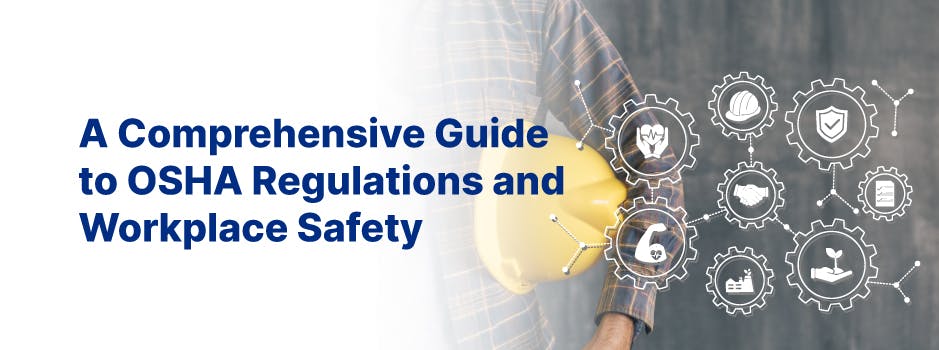Introduction
Occupational safety and health are paramount in every workplace, regardless of the industry. The Occupational Safety and Health Administration (OSHA) is responsible for enforcing regulations that ensure a safe and healthy work environment for employees in the United States. In this comprehensive guide, we will explore OSHA regulations, the importance of workplace safety, and best practices for maintaining a safe and healthy work environment. With a focus on hazard identification, employee rights, and compliance, this guide will help employers and employees alike create a safer, more productive workplace.
Understanding OSHA Regulations
The Occupational Safety and Health Act of 1970 established OSHA as a federal agency with the primary responsibility of ensuring safe and healthy working conditions for employees in the United States. OSHA sets and enforces standards to reduce workplace hazards and provide training, outreach, education, and assistance to employers and employees.
OSHA Standards
OSHA standards are rules that describe the methods employers must use to protect their employees from hazards. These standards are divided into four main categories:
- General Industry (29 CFR 1910)
- Construction (29 CFR 1926)
- Maritime (29 CFR 1915, 1917, and 1918)
- Agriculture (29 CFR 1928)
Employers must comply with these standards to ensure the safety and health of their employees.
Hazard Identification and Assessment
OSHA requires employers to identify and assess workplace hazards to protect their employees from potential risks. Employers must perform a hazard assessment, which involves the identification and evaluation of potential hazards that could cause harm to employees. This process includes:
- Conducting regular workplace inspections
- Reviewing records of workplace injuries and illnesses
- Investigating incidents and near misses
- Soliciting input from employees regarding potential hazards
Employee Rights
Under OSHA regulations, employees have the right to:
- Work in an environment free from recognized hazards
- Receive training and information about workplace hazards, OSHA standards, and their rights
- Request an OSHA inspection if they believe there are unsafe or unhealthy conditions
- Participate in OSHA inspections and speak privately with inspectors
- Report safety and health concerns without fear of retaliation
The Importance of Workplace Safety
Reduced Workplace Accidents and Injuries
By complying with OSHA regulations and implementing safety measures, employers can significantly reduce the number of workplace accidents and injuries. This not only protects employees but also reduces costs associated with workers' compensation claims, medical expenses, and lost productivity.
Improved Employee Morale and Retention
A safe and healthy work environment fosters a positive company culture, leading to improved employee morale and retention. Employees who feel valued and protected are more likely to be engaged, productive, and loyal to the organization.
Legal and Financial Benefits
Adherence to OSHA regulations helps employers avoid costly fines, legal actions, and potential damage to their reputation. Compliance also reduces the likelihood of costly lawsuits resulting from workplace accidents and injuries.
Best Practices for Maintaining a Safe and Healthy Work Environment
Develop a Safety and Health Program
A comprehensive safety and health program serves as a roadmap for employers to identify, assess, and control workplace hazards. Key elements of an effective program include:
- Management commitment and employee involvement
- Workplace hazard analysis
- Hazard prevention and control measures
- Employee training and education
- Emergency preparedness and response plans
- Regular program evaluation and improvement
Implement Engineering Controls
Engineering controls are the most effective way to eliminate or reduce workplace hazards. These controls focus on modifying or redesigning work processes, equipment, or facilities to minimize exposure to hazards. Examples of engineering controls include:
- Installing ventilation systems to remove harmful substances
- Enclosing noisy equipment to reduce noise exposure
- Using machine guards to protect employees from moving parts
Establish Administrative Controls
Administrative controls involve changes in workplace policies, procedures, or schedules to minimize employees' exposure to hazards. Examples of administrative controls include:
- Developing standard operating procedures for handling hazardous materials
- Implementing job rotation schedules to limit employees' exposure to repetitive tasks or harmful substances
- Providing regular breaks to reduce physical and mental fatigue
Provide Personal Protective Equipment (PPE)
When engineering and administrative controls are not feasible or do not provide sufficient protection, employers must provide employees with appropriate personal protective equipment (PPE). PPE includes items such as safety glasses, gloves, respirators, and protective clothing. Employers must ensure that employees are trained in the proper use, care, and maintenance of their PPE.
Encourage Employee Participation
Employee involvement is crucial to the success of any workplace safety program. Encourage employees to participate in safety initiatives by:
- Soliciting their input on hazard identification and control measures
- Involving them in the development and implementation of safety policies and procedures
- Establishing safety committees or designating safety representatives to promote a culture of safety
Conduct Regular Training and Education
Regular training and education on workplace safety and OSHA regulations are essential for maintaining a safe and healthy work environment. Employers should provide training on topics such as:
- Hazard communication and the Globally Harmonized System (GHS)
- Emergency response and evacuation procedures
- Proper use of personal protective equipment (PPE)
- Safe work practices for specific tasks and equipment
Conclusion
A comprehensive understanding of OSHA regulations and the importance of workplace safety is crucial for employers and employees alike. By identifying and addressing potential hazards, adhering to OSHA standards, and implementing best practices, organizations can create a safer, healthier, and more productive work environment. Remember that fostering a culture of safety requires the commitment and active participation of everyone in the workplace.

